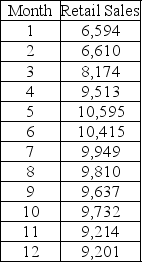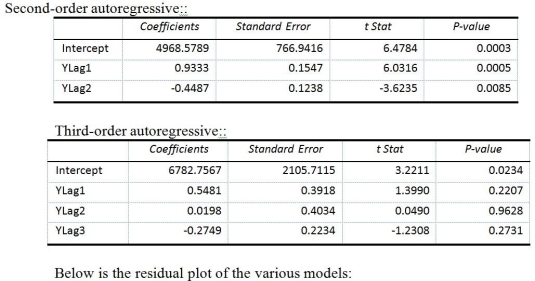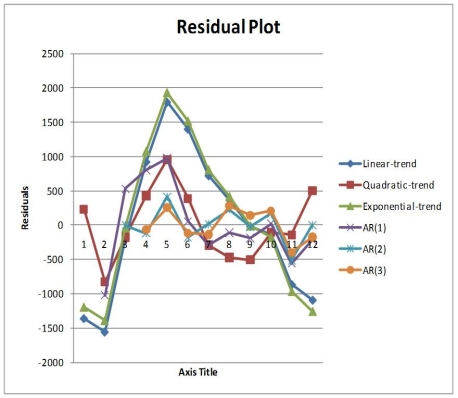TABLE 16-13
Given below is the monthly time-series data for U.S. retail sales of building materials over a specific year.

The results of the linear trend, quadratic trend, exponential trend, first-order autoregressive, second-order autoregressive and third-order autoregressive model are presented below in which the coded month for the first month is 0:




-Referring to Table 16-13, construct a scatter plot (i.e., a time-series plot) with month on the horizontal X-axis.
Definitions:
Sensitivity Analysis
Analyzes how different values of an independent variable affect a particular dependent variable under a given set of assumptions.
Simulation Analysis
Involves the use of mathematical models to predict the outcome of various financial strategies under different conditions.
Cash Break-Even
Cash break-even is the point at which a business's cash receipts equal its cash expenses, indicating the minimum amount of sales needed to cover all cash outflows without considering any profit.
Operating Cash Flow
A measure of the cash generated by a company's normal business operations over a specific period.
Q9: Unweighted aggregate price indices account for differences
Q24: In multiple regression, the _ procedure permits
Q89: Referring to Table 14-10, the 99% confidence
Q91: Referring to Table 15-6, the variable X₅
Q96: Referring to Table 16-5, exponentially smooth the
Q102: Referring to Table 14-18, what is the
Q202: Referring to Table 16-2, what is the
Q229: One of the reasons that a correction
Q297: Referring to Table 14-17 Model 1, predict
Q314: Referring to Table 9-2, if you select